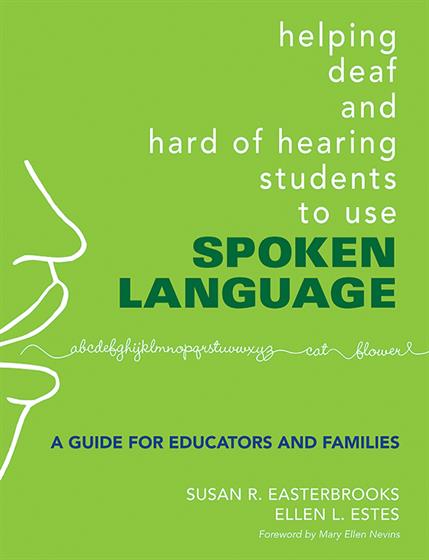Foreword (by Mary Ellen Nevins, EdD)
Preface
Acknowledgements
About the Authors
Part 1: The Art of Intervention
1. Listening and Spoken Language Interventions: A Model and Activities for Helping Children
Listening Challenges That Children Must Overcome
Model of Auditory, Speech, and Language Development
Summary
2. Early Detection and Intervention for Infants and Toddlers
Early Detection and Intervention
Necessary Services for Infants, Toddlers, and Their Families
How Listening Develops in Infants and Toddlers
How Infants Develop Spoken Language
How Toddlers Develop Spoken Language
Interventions for Babies
Applying the Model With Babies
Interventions for Toddlers
Applying the Model With Toddlers
If a Child Is Not Making Measurable Progress
The Need for Flexible Models
Summary
3. Intervention for Preschoolers
Collaborating With Service Providers
What You Need to Know About a Child's Hearing Loss
What You Need to Know About Previous Intervention
What You Need to Know About Listening Technology
What You Need to Know About a Child With No Prior Services
Planning and Implementing Instruction and Interventions
Factors to Consider When Planning Lessons
Techniques to Use When Conducting a Lesson
Interventions for Preschoolers
Applying the Model With Preschoolers
Summary
4. Interventions for Children in the Primary Grades
A Typical Day in the Life of the Young Student With a Hearing Loss
The Effects of Hearing Loss in the Classroom
Assessing a Child's Present Levels of Performance
The Multidisciplinary Team of Professionals Who Can Assist the Teacher
Readiness for School
Instructional Considerations
Interventions for Children in the Primary Grades
Applying the Model With Kindergartners and Early Elementary Children
Summary
5. Developing Literacy Skills in Children With Hearing Losses
Learning to Read
Effective Approaches to Reading
Using Reading to Develop Language - A Paradox
Assessment
Implications for the Special Education Teacher
Implications for the General Education Teacher
Intervention
The Literacy Team
Summary
Part 2: The Science of Intervention
6. How Children Hear and Talk: Fundamentals of Listening and Speaking
The Speech Chain
Linguistic Level
Physiological Level: The Physiology of Speech
Physiological Level: The Physiology of Hearing
Acoustic Level
Hearing Aids, Cochlear Implants, and Assistive Listening Devices
Classroom Acoustics - Increasing the Child's Ability to Hear and Understand the Teacher and Peers
Daily Device Monitoring: Your Responsibility
How to Give the Ling Sound Check
Summary
Resource A: Organizations and Agencies Serving Children With Hearing Losses
Resource B: Assessments
Resource C: Sound-Object Associations (by Ellen A. Rhoades, EdS)
Resource D: Commercially Available Curriculum Guides and Materials
References
Index




